Transfer of Energy
Biological Pyramids
Matter and Reactions
Human Impact on Matter Cycles
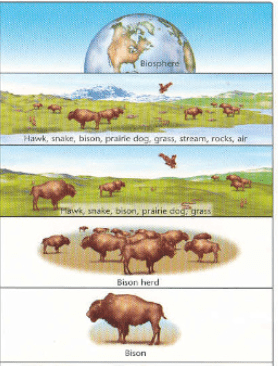 Identify the 6 Levels of Organization
Identify the 6 Levels of Organization
What is Individual, Population, Community, Ecosystem, Biome, and Biosphere?
In your own words: differentiate between Autotrophs and Heterotrophs
Autotrophs: organisms that make their own food/plants/producers
Heterotrophs: organisms that need to get energy from another organism/animals/consumers
Explain key components of the 3 Ecological Pyramids:
1. Energy Pyramid
2. Biomass Pyramid
3. Pyramid of Numbers
1. Energy Pyramid shows the amount of energy that goes from one trophic level to the next.
2. Biomass Pyramid shows the total dry mass for each trophic level.
3. Pyramid of Numbers show the amount of organisms in each trophic level.
The process called where oxygen is consumed by an organism, and in return carbon dioxide is released.
What is Cellular Respiration?
The Cycle that contributes the most to Global warming and recycles carbon throughout the atmosphere. It also occurs in both land and water.
What is the Carbon cycle?
When gases get trapped within the ozone layer and burn holes in them, resulting in Earth's temperature rising.
What is the Greenhouse Effect?
Identify the 4 Spheres of Ecology and what each one contributes to the planet.
1. Atmosphere: the gases that surround the planet.
2. Geosphere: the minerals and land masses that are layered around the crust.
3. Hydrosphere: the bodies of water (fresh and salt)
4. Biosphere: the living organisms on the planet that are impacted by the other spheres.
The role of the Wolf in this ecosystem is...
What is the Apex Predator?
The Percent of energy passed from one trophic level to the next.
What is 10%?
Carbon, Hydrogen, Nitrogen, Oxygen, Phosphorus, and Sulfur are all considered...
What are Essential Elememts?
Name this cycle:
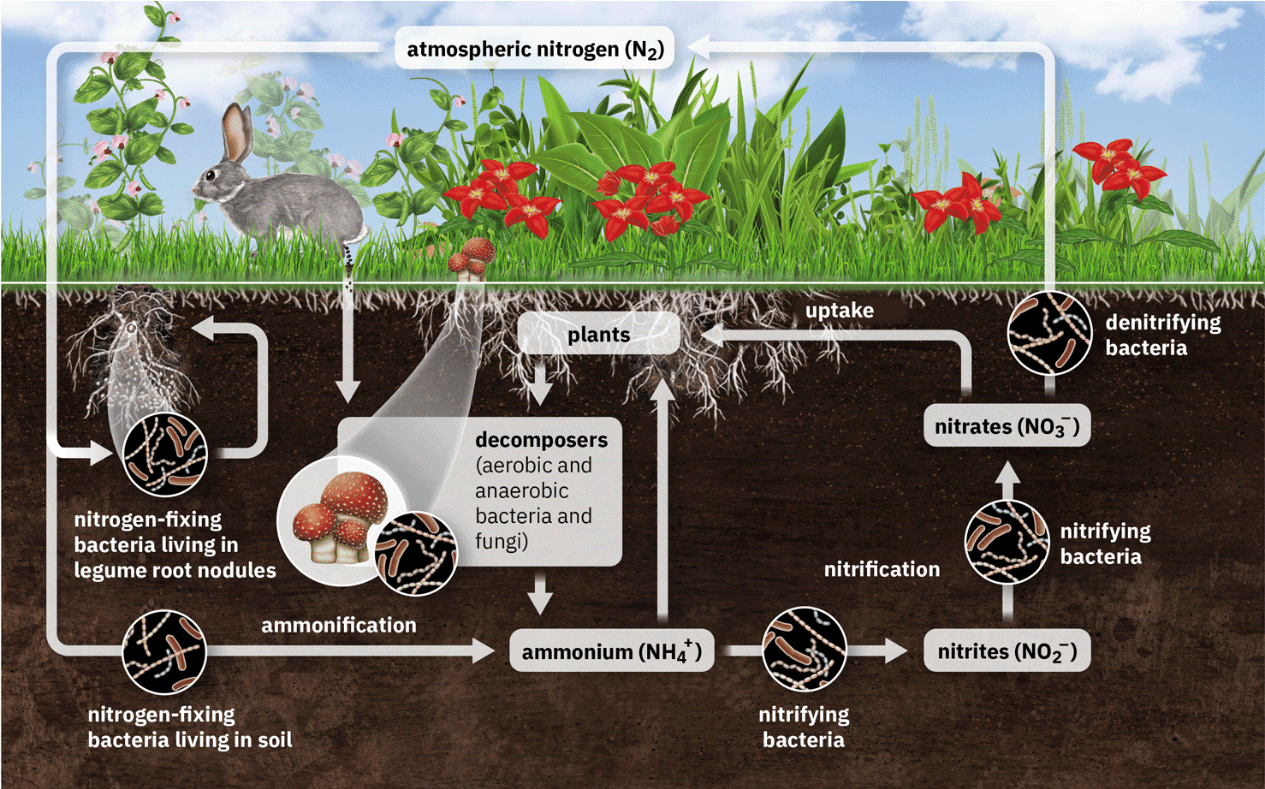
What is the Nitrogen cycle?
What impact do farmers have on the ecosystem when they spray pesticides and wash away fertilziers?
What is Nutrient Pollution?
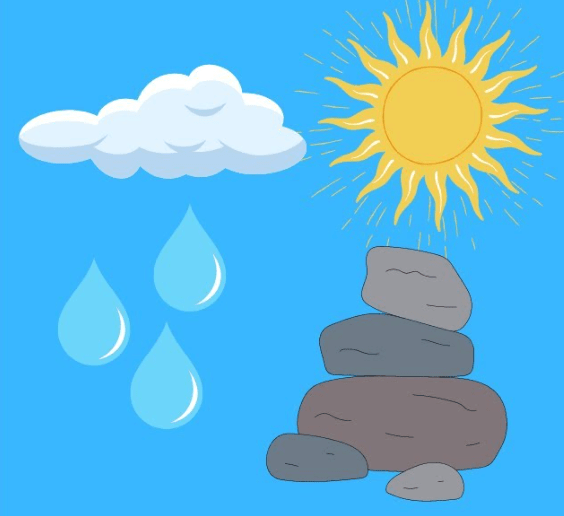 The type of factor includes water, oxygen, fire, minerals
The type of factor includes water, oxygen, fire, minerals
What are Abiotic Factors?
List the 5 Heterotrophs, and what they eat.
Herbivore: plants
Carnivores: meat
Omnivores: Both plants and meat
Detritivore: rotting flesh
Decomposers: breaks down rotted meat/organisms
If a secondary consumer has 1,000 Joules of energy, the amount of joules the producer has is...
What is 100,000 Joules?
Remember the 10% Rule!
Water is considered a...
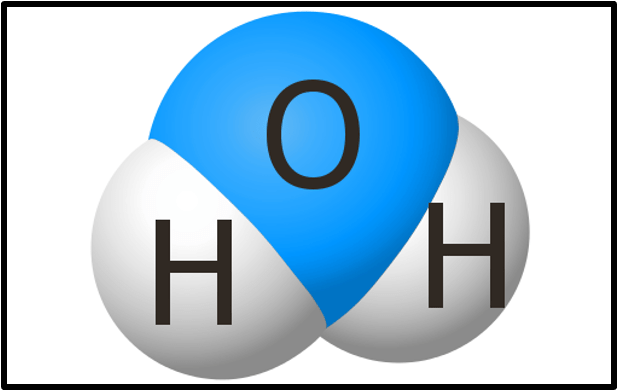
What is a Compound?
(Two different elements held together by bonds)
Physical/Chemical processes, Geological processes, and Biological processes are categorized together as...
What is Biogeochemical Cycle? (the movement of matter throughout living and non-living things)
Write down human actions that increase temperature.
Burning Fossil Fuels, Smoking, Spraying Lotion, etc.
A zone of transition from one ecosystem to the next. (Beach or Tidal Pools)
What is an Ecological Boundary?
In a food web, energy flows from the herbivores to the _________ consumer...
(Do Not Say Carnivores!)
What is a Secondary Consumer?
The type of organism that are typically kept off of pyramids because energy will always flow to them regardless of the trophic level.
What are Decomposers?
Plants converting sunlight and carbon dioxide into oxygen is known as...
What is Photosynthesis?
Name this cycle:
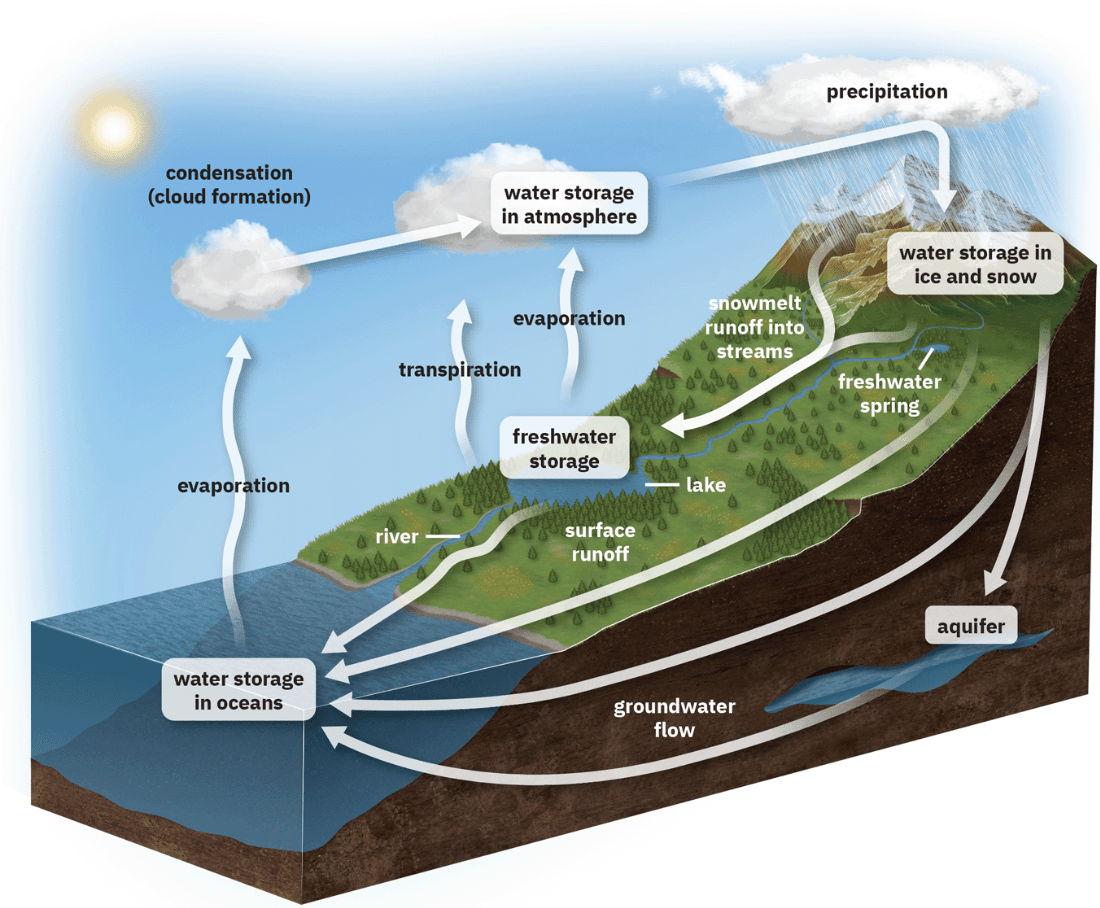
What is the Water Cycle?
Write down solutions humans can take to prevent Climate Change.
Differentiate communities and ecosystems using their factors.
Community: Biotic Factors ONLY
Ecosystem: Biotic and Abiotic Factors
Explain the impact on the ecosystem, if the number of primary consumers were to increase.
The number of producers/autotrophs would decrease and this would cause an ecological spiral, destroying the whole ecosystem.
The Largest trophic level on all 3 ecological pyramids.
What are Producers?
Oxygen is written as O2. This is referred to as a...
What is a Molecule?
This cycle recycles through minerals and water, as well as consumption from biotic factors.
What is the Phosphorus cycle?
What effects do rising sea levels have on ecosystems around the world?
Change in weather patterns, altered ecosystems, extinction of certain species.